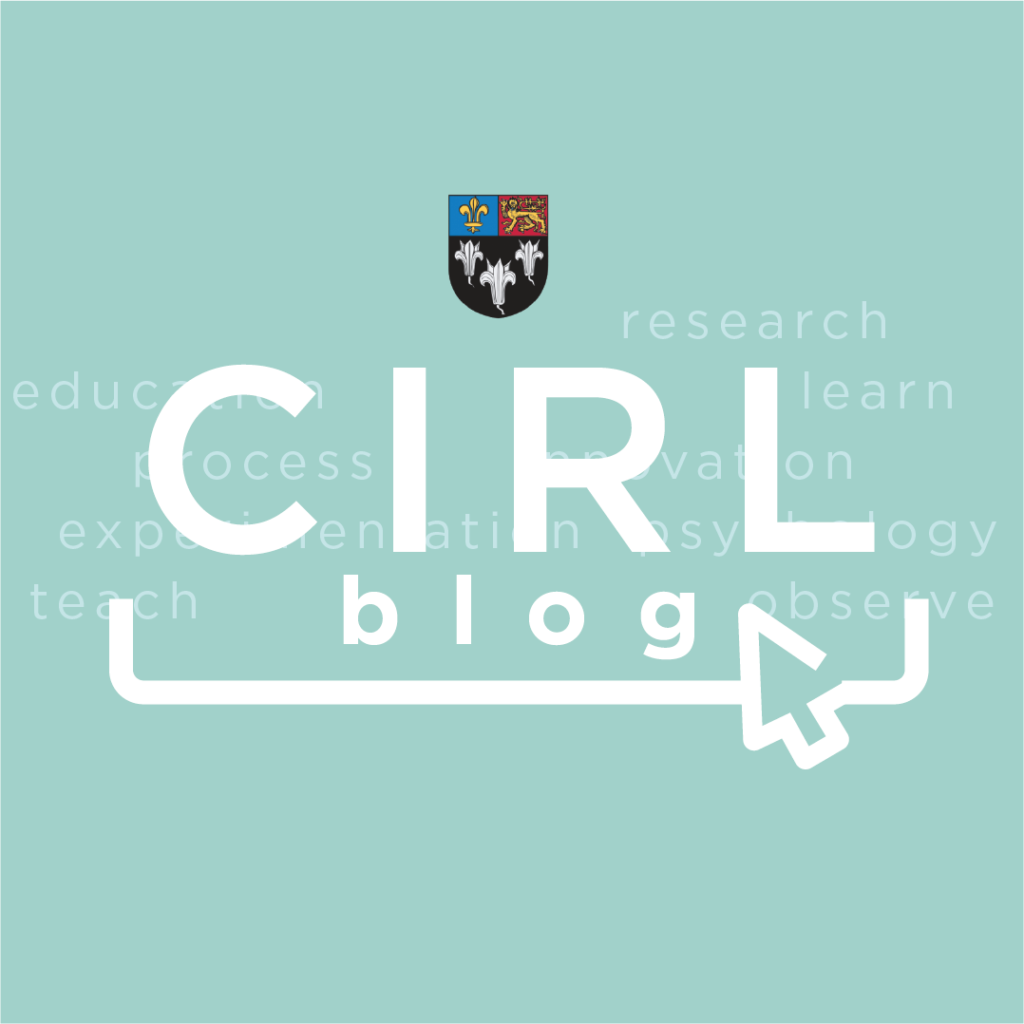This blog post describes what some of the current evidence tells us about differentiation and outlines some evidence-based differentiation strategies. It covers the following areas:
1. What is differentiation?
2. Four common misconceptions about differentiation
3. Some of the main issues concerning differentiation
4. To what extent should teaching and learning accommodate learning preferences?
5. Which learning preferences should in fact be understood as learning differences, and what are the best strategies for addressing these differences?
6. Summary of key points
Section (3) focuses on Greg Ashman’s work on differentiation (Ashman 2019). Sections (4)-(5) focus on Peter Brown, Roddy Roediger & Mark McDaniel’s 2014 book Make It Stick: The Science of Successful Learning.
Jonathan Beale, Researcher-in-Residence, CIRL
1. What is differentiation?
Differentiation can be broadly defined as anything a teacher does to help personalise a student’s learning. It’s a teaching and learning strategy that aims to provide the best chance of learning for every student, irrespective of their capabilities and in all conditions (Bromley 2019; Gershon 2013).
2. Four common misconceptions about differentiation
1. Differentiated teaching and learning is not a means of addressing all student learning differences.
There are some differences, such as certain specific educational needs, which provide teaching and learning challenges, even when effective differentiation strategies are employed (Hill 2018).
2. Differentiated teaching and learning does not only concern addressing the needs of individual students.
Differentiation in teaching and learning can involve approaches for individual students, small groups of students, and whole class teaching.
Whole group teaching can be followed by differentiated activities that are based on the material taught to the whole group and focus on individual student differences. For example, if a whole class is set a writing task after teaching, a differentiation technique to support some individual students would be to provide sentence starters to help those students who struggle with extended writing (ibid.).
3. Differentiated teaching and learning often involves group work, but need not always do so. Moreover, when in groups, students need not be put in groups based on level of ability.
A common differentiation strategy is to group students together based on level of ability. But an effective teaching and learning strategy is to group students of mixed ability together such that combinations of strengths across the group work for the benefit of the whole group. Students can develop their areas of weakness by working with students who possess strengths in those areas, and vice versa. There’s evidence to support the benefits of more advanced students helping less advanced students (more on this shortly) (Ashman 2019; Hill 2018).
4. Differentiation does not mean changing workload based on ability.
To differentiate, we should not simply adjust the workload for students by setting more able students ‘extension work’ on the same areas they have been taught. Rather, the work we set students should be adjusted according to their needs to support them meeting their potential.
For example, one differentiation technique is to set extension questions based around philosophical concepts concerning an area that students have just been taught. This helps to challenge the thinking of more able students who finish their work before others (Gershon 2013; Hill 2018).
3. Some of the main issues concerning differentiation
Ashman provides a useful, critical overview of the techniques most teachers call ‘differentiation’ (Ashman 2019). Ashman’s main argument is that some forms of differentiation seem to have a positive impact, but not all. His main points are:
- Differentiation is overhyped and strong evidence in support of differentiation is scarce. There’s little evidence that many of the techniques teachers call differentiation have a positive impact on learning outcomes.
- There’s evidence that some differentiation techniques can be counterproductive. For example, giving students choice over the kinds of tasks they do. The tasks students tend to prefer doing are not always the tasks from which they make the most significant learning gains (ibid.; Clark 1982).
- When considering the benefits of meeting individual students’ learning needs, we need to also consider the costs. For example, when pupils are split into groups to recognise possible variance, this can result in less instruction and contact time.
- Sometimes we may wish to accommodate needs and sometimes address them, but these two approaches are different and labelling both of them ‘differentiation’ is unhelpful. Techniques that seek to accommodate rather than to address specific difficulties risk giving students less instruction in how to improve their areas of comparative weakness.
- There is more evidence of positive impact when students are assigned tasks of varying difficulty by their teacher according to where they are in their learning, and when less advanced students are helped by more advanced students (Ashman 2019; Mastropieri et al. 2006).
4. To what extent should teaching and learning accommodate learning preferences?
A widespread view in education is that a student learns best when they’re taught in accordance with their ‘learning style’ – that is, when the way in which they’re taught matches the style in which they’re best able to learn. However, evidence suggests that while we allhave learning preferences, there is insufficient evidence to show that we learn better when teaching is made to fit those preferences.
However, there are some learning preferences that matter – that is, certain preferences should in fact be understood as learning differences (Brown, Roediger & McDaniel 2014, 132 & 145). These are outlined in what follows. For more on Brown, Roediger & McDaniel on learning styles, see this blog post.
When adapting teaching and learning strategies in light of possible learning differences, a good overall teaching and learning strategy to adopt is the following:
1. Where sufficient evidence suggests there is a learning difference, employ teaching and learning strategies to accommodate this difference.
2. Where sufficient evidence suggests there is a learning difference, employ teaching and learning strategies to accommodate this difference.
Examples of methods for (2) are:
- Formative, dynamic testing
- Spaced practice and interleaving
- Retrieval practice (ibid., 146)
- Reviewing and learning in small steps (Rosenshine 2010; Sherrington 2019, 35-8).
The links above are to blog posts on the above areas.
The reason for following this two-stage strategy is put forward by Brown, Roediger & McDaniel (2014, 146):
‘[T]he evidence currently available does not justify the huge investment of time and money that would be needed to assess students and restructure instruction around learning styles. Until such evidence is produced, it makes more sense to emphasize the instructional techniques … that have been validated by research as benefitting learners regardless of their style preferences.‘
5. Which learning preferences should in fact be understood as learning differences, and what are the best strategies for addressing these differences?
Difference 1: structure building
One important difference between learners concerns levels of ability in ‘structure building’. This is the ‘act, as we encounter new material, of extracting the salient ideas and constructing a coherent mental framework [i.e., a mental model] out of them’ (Brown, Roediger & McDaniel 2014, 153).
Constructing mental models of what we learn involves relating new learning to existing knowledge and contextualising it within our existing frameworks, and applying it to relevant areas. This holds together the central ideas and rules of an area of learning. Mental models function as scaffolds and frameworks that help us structure our learning and relate it to other knowledge we have. An example of structure building is the ability to construct a coherent narrative of new learning and connect it with existing knowledge (ibid., 133 & 153-4).
There is a difference between ‘high’ and ‘low structure builders’. ‘High structure builders’ possess higher skills in structure building. They are able to,
- ‘learn new material better than low-structure builders’ (ibid., 153);
- ‘develop the skill to identify foundational concepts and their key building blocks’;
- ‘develop the skill to … sort new information based on whether it adds to the larger structure and one’s knowledge or is extraneous and can be put aside’.
By contrast, low structure builders,
- lack skills in constructing mental models of learning;
- ‘struggle in figuring out and sticking with an overarching structure and knowing what information needs to fit into it and what ought to be discarded’ (ibid., 154).
Here’s three strategies for improving structure building skills.
1. To help low structure builders focus on the main ideas, embed questions in texts:
‘[When] questions are embedded in texts to help focus readers on the main ideas, the learning performance of low structure-builders improves to a level commensurate with high structure-builders’.
The ‘embedded questions promote a more coherent representation of the text than low-structure readers can build on their own’ (ibid., 155).
2. Encourage students to create and consolidate their own mental models which help them draw together ideas and rules into coherent, structured wholes. For example, identifying connections between new learning and existing knowledge, such that it can be added to existing frameworks (ibid., 160).
3. An example of a mental model is constructing a narrative: a story is a structure. A way to improve structure building skills is to encourage students to cultivate the habit of constructing narratives of how they learn:
‘[C]ultivating the habit of reflecting on one’s experiences, of making them into a story, strengthens learning. The theory of structure building may provide a clue as to why: … reflecting on what went right, what went wrong, and how I might do it differently next time helps me isolate key ideas, organize them into mental models, and apply them again in the future with an eye to improving and building on what I’ve learned’ (ibid., 155).
Difference 2: rule and example learning
Another important difference between learners concerns the ways in which students learn through rules or examples.
Rule learners ‘tend to abstract underlying principles or “rules” that differentiate the examples being studied’. Example learners ‘tend to memorize the examples rather than the underlying principles’. Rule learners apply the rules they have learned to new situations whereas example learners generalise on the basis of examples from memory (ibid., 156).
Rule learning has advantages over example learning, and example learners need more support in certain areas than rule learners. Learning rules, applying and abstracting them into a structure is important for gaining knowledge and skills:
- We need to understand the underlying principles behind areas of knowledge and skills, and fit them together coherently into complex structures.
- Example learners tend to focus on the parts rather than the rules that govern the structure of the whole, but knowledge consists of structures larger than the sum of the parts learned (e.g., the overall, rule-governed, conceptual framework) (ibid., 158 & 161).
Rule learners tend to ‘single out salient concepts from the less important information they encounter in new material’ and ‘link these key ideas into a mental structure’, both of which are habits of ‘more successful learners’. More successful learners also tend to ‘extract underlying principles or rules from new experiences’ rather than taking experiences at face value. The former is a tendency of rule learners and the latter a tendency of example learners.
By not tending to extract underlying principles or rules, example learners often do not ‘infer lessons that can be applied later in similar situations’. Example learners might also generalise to new situations on the basis of examples that are not especially relevant to the new cases they encounter (ibid., 133).
Some people are more naturally rule learners than example learners. But example learners can develop their rule learning skills. Here’s three strategies:
1. Example learners can improve their skills at extracting underlying rules by comparing two (or more) different examples, rather than focusing on one example at a time.
So, provide students with two (or more) examples to compare. Encourage students to identify similarities and differences between examples, ideally with the aim of solving the problem(s) at hand. For example, ask questions such as ‘Are the differences such that they require different solutions, or are the similarities such that they respond to a common solution?’ (ibid., 160).
2. Example learners ‘are more likely to discover the common solution to disparate problems if they first have to compare the problems and try to figure out the underlying similarities’ (ibid., 156).
So, give students disparate problems to compare and try to solve themselves, before giving them (further) clues towards solutions. When giving clues, encourage students to look for similarities between the problems, to develop their skills in identifying underlying rules.
3. Rule learning involves being able to see the component parts of a larger whole and how the parts unite together to form a whole greater than the sum of the parts.
So, encourage students to,
- break down ideas, theories, frameworks, notions, explanations (etc.) into their component parts;
- try to identify rules and central ideas;
- describe each idea and rule, and how they all hang together, by recalling what they have learned and relating it to the ideas and rules (ibid., 160).
6. Summary of key points
1. What is differentiation?
- Broadly speaking, it’s anything a teacher does to help personalise a student’s learning.
- More specifically, it’s a teaching and learning strategy that aims to provide the best chance of learning for every student, irrespective of their capabilities and in all conditions.
2. Four common misconceptions about differentiation
1. Differentiated teaching and learning is not a means of addressing all student learning differences.
2. Differentiated teaching and learning does not only concern addressing the needs of individual students.
3. Differentiated teaching and learning often involves group work, but need not always do so. Moreover, students need not be put in groups based on level of ability.
4. Differentiation does not mean changing workload based on ability.
3. Some of the main issues concerning differentiation
- Differentiation is overhyped and strong evidence in support of differentiation is scarce.
- There’s evidence that some differentiation techniques can be counterproductive.
- When considering the benefits of meeting individual students’ learning needs, we need to consider the costs.
- Sometimes we may wish to accommodate needs and sometimes address them, but these two approaches are opposite and labelling both ‘differentiation’ is unhelpful.
- Techniques that seek to accommodate rather than to address specific difficulties risk giving students less instruction in how to improve their areas of comparative weakness.
- There’s more evidence of positive impact when students are assigned tasks of varying difficulty by their teacher according to where they are in their learning, and when less advanced students are helped by more advanced students (Ashman 2019).
4. To what extent should teaching and learning accommodate learning preferences?
The following two-stage strategy is recommended:
1. Where sufficient evidence suggests there is a learning difference, employ teaching and learning strategies to accommodate this difference.
2. Where there is insufficient evidence, employ teaching and learning methods that evidence shows are effective for all learners.
5. Which learning preferences should in fact be understood as learning differences, and what are the best strategies for addressing these differences?
Two of these are discussed above. First, the difference between high and low structure builders. Strategies:
- Embed questions in texts
- Construct mental models
- Encourage students to construct narratives of how they learn
Second, the difference between rule learning and example learners. Strategies:
- Use at least two examples
- Encourage students to compare problems and figure out solutions independently
- Break learning down and identify rules
References
Ashman, Greg, 2019. ‘The Differentiation Myth’ in Craig Barton (ed.), The ResearchEd Guide to Education Myths: An Evidence-informed Guide for Teachers (Woodbridge: John Catt, 2019).
Bromley, Matt, 2019. ‘Differentiation in the Classroom’. SecEd, April 2019.
Brown, Peter C., Henry L. Roediger III & Mark A. McDaniel (2014). Make It Stick: The Science of Successful Learning. Cambridge, MA: Harvard University Press.
For detailed summaries of the chapters in Make It Stick, see our blog. For a webinar with the authors on some of the topics in this presentation, see our podcast.
Clark, R. E., 1982. ‘Antagonism between achievement and enjoyment in ATI studies’. Educational Psychologist 17 (2), 92-101
Gershon, Mike, 2013. ‘Differentiation in the Classroom: Personalising Learning’. MikeGershon.com.
Hill, Michele, 2018. ‘What Is Differentiation All About?’. Teacher Toolkit, March 2018.
Mastropieri, M. A., T. E. Scruggs, J. J. Norland, S. Berkeley, K. McDuffie, E. H. Tornquist & N. Connors, 2006. ‘Differentiated curriculum enhancement in inclusive middle school science: Effects on classroom and high-stakes tests’. Journal of Special Education 40 (3), 130-137.
Rosenshine, Barak, 2012 [2010]. ‘Principles of Instruction: Research-based Strategies That All Teachers Should Know’, American Educator.
Sherrington, Tom, 2019. Rosenshine’s Principles in Action. Woodbridge: John Catt.
For detailed summaries of Rosenshine’s ‘Principles’ and Sherrington’s book, see our blog.





